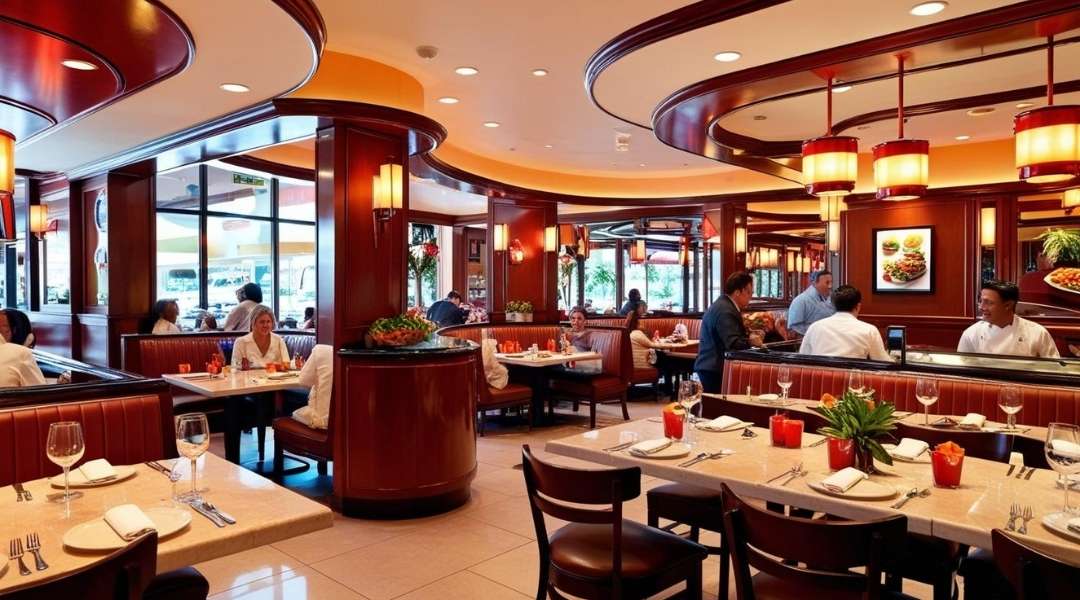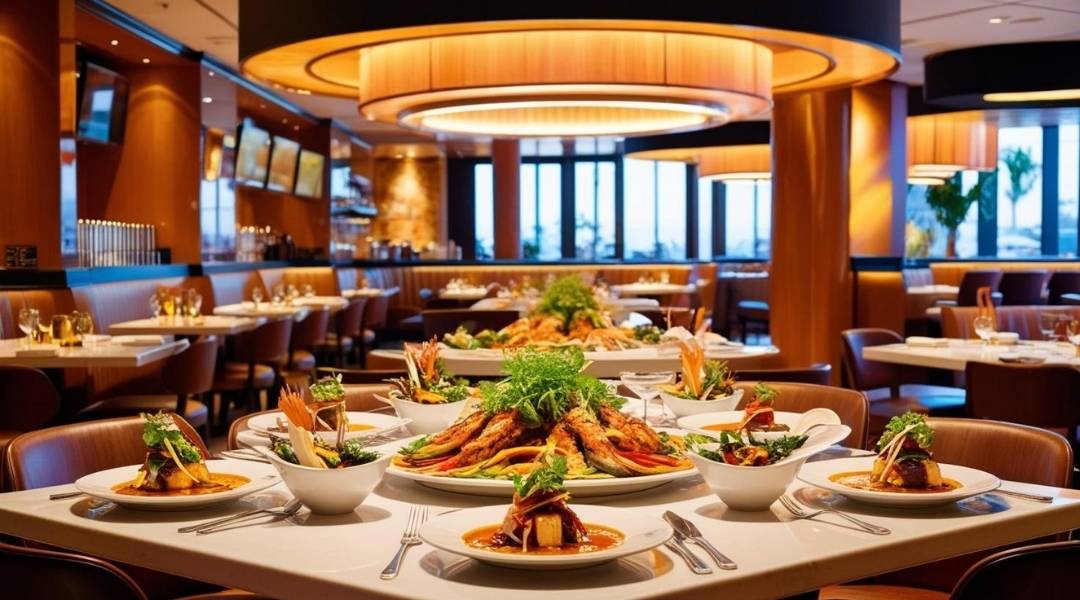Top search rankings mean greater visibility and more customers. A staggering 75% of people never scroll beyond the first page, so high placement boosts discovery and clicks. If you run a Seattle sushi spot, optimizing for terms such as “Seattle’s best sushi” can funnel hungry patrons straight to your site.
The strategy draws in a crowd, bringing people to your website and, if you have a physical location, to your store as well. Is your dream of having a thriving business? Try this. It works. Use smart keywords and a website that looks good on any device, and keep it fresh with regular updates showing off what makes you special.
Prepare to improve your online presence with a key first step: optimize your Google Business profile.
Optimize Your Google Business Profile
Want more people to find your restaurant online? Start by filling out every detail on your Google Business Profile. Add your phone number, address, and website so it’s easy for customers to reach you. And don’t forget to upload high-quality photos of your food, nothing draws in hungry customers like delicious visuals!
Make sure your business hours are accurate, too. When people know exactly when you’re open, it builds trust and makes it easier for them to plan a visit. Google also loves complete, up-to-date info, which can help you rank higher in local searches.
Here’s something to keep in mind: 75% of people never scroll past the first page of search results. That’s why it’s so important to stand out quickly. Keep your profile fresh by adding updates about promotions, menu changes, or seasonal specials.
Lastly, stay active by answering customer questions. It shows you care, builds trust, and boosts your visibility even more. The more engaged you are, the more likely people are to choose your spot for their next meal.
Explore more insights on SEO for restaurants to stay ahead in your market.
Use Location Keywords Strategically
- Captivate Local Traffic: Use city terms that match your menu appeal and style. Include phrases like best sushi in [city] to attract locals. Know who wants lunches or gourmet bites in that area. Weave these keywords into headings, titles, and meta descriptions effectively.
- Refine With Keyword Tools: Use Google Keyword Planner or SEMrush for helpful location data. Check search volume to see how people seek city terms. Pick moderate competition levels to rank well in your region. Refine your list based on local flavors and dining habits.
- Match Content to Local Searches: Place city names naturally in headings, paragraphs, or alt tags. Create pages that speak to local eaters seeking unique dining. Add local keywords into titles, content sections, and metadata to help search engines find you. Test each placement by tracking engagement levels and conversions, then adjust based on diner responses.
Create High-Quality Localized Content
Produce text that reflects your city’s unique flavor. Use references to local events and popular ingredients. Include stories about your chef’s background or the dish’s origins in your area.
Such details show search engines and customers that you offer genuine local experiences. Keep the content fresh through frequent menu highlights, seasonal specials, or community spotlights. Aim for structured, easy-to-read posts that lead people toward your restaurant.
Avoid repetitive language or keyword stuffing. Instead, include phrases that feel natural and connect with neighborhood searches. A few well-chosen phrases can strengthen your local ranking.
Provide real value by giving cooking tips or sharing local dining trends. This encourages visits and builds brand trust. Consistent updates set you apart, letting people see you as a choice; that small detail boosts local appeal.
Focus on Mobile-Friendly Website Design
Your site must adapt well to phones to attract hungry customers effectively. Many diners frequently visit websites from their smartphones and expect speedy access day or night.
- Prioritize Speed: Slow-loading pages push visitors away. Fast site performance can boost search rankings and orders. Reduce large image sizes to improve load times. A quick, consistently fast site helps you gain more local traffic.
- Use Responsive Design: A flexible layout fits any screen and keeps users engaged. Your menu and ordering buttons appear well on different devices. Ensure your text is readable without frustrating zooming. Google rewards mobile-friendly pages with better placements.
- Optimize Navigation: Keep your main menu visible for quick ordering. Place your contact info and directions at the top. Clear categories help diners find meals faster. A simple navigation reduces confusion and boosts repeat visits.
Encourage Positive Customer Reviews Online
Ask your diners for honest feedback whenever they enjoy their meals. Encourage them to share their thoughts on review platforms so online audiences see proof of quality. Place simple reminders on receipts or table cards inviting visitors to leave a review.
Offer quick links where they can post comments with minimal effort, reward repeat patrons who share feedback with small perks, like free appetizers or loyalty points. Thoughtful responses to both positive and negative reviews show that you care about customer satisfaction.
Maintain a calm tone and offer solutions in response to criticisms. This can lead to updated ratings in the future. Frequent mention of your restaurant’s strengths within reviews helps search engines signal your relevance.
These steps boost your online image and help you rank higher in local results.
Leverage Schema Markup for Restaurants
Schema markup boosts restaurant visibility in local search outcomes. It signals key details that guide search engines effectively.
Choose the Right Local Business Type:
Select LocalBusiness if your restaurant has a public address. Be sure to include details like your full postal address and phone number. You can also choose a more specific subtype, like Restaurant, to help search engines better understand your business.
Add Key Recommended Fields:
- Opening Hours: Clearly list when you’re open so visitors know when they can dine.
- Geo Coordinates: Use latitude and longitude with five decimal places for accurate map placement.
- Serves Cuisine: Specify your type of food (like Italian, Mexican, or Thai) to improve visibility in cuisine-based searches.
Include Ratings and Reviews:
- Aggregate Rating: Show overall customer satisfaction to attract more diners.
- Review Markup: If your site collects reviews, use structured data to tag them properly.
- Well-tagged, genuine reviews build trust and increase click-throughs by showing social proof directly in search results.
These steps help search engines display your restaurant accurately, and help more hungry customers find you.
Add Accurate and Consistent NAP Details
Your business name, address, and phone number must appear consistently on every major platform. This builds trust with search engines.
- Use the Same Format Every Time: Make sure your business name is listed the same way on every website. Keep things like “Street” or “St” consistent so search engines can clearly recognize your business.
- Watch for Directory Differences: Some directories use different formats for your contact info, which can confuse search engines. Keep your listings consistent across social media, review platforms, and business directories to avoid sending mixed signals.
- Use the Same URL: Even though your website URL isn’t technically part of your NAP (Name, Address, Phone), it still matters. Always use the same version of your domain; for example, stick with either https://yourwebsite.com or https://www.yourwebsite.com, but not both. This helps boost your authority in local search.
Maintaining consistent NAP details might sound simple, but it’s one of the most effective ways to improve your local SEO. When your business info matches across the web, search engines trust you more, leading to higher rankings and more visibility with potential customers.
Highlight Menus with SEO Optimization Features
Your menu can do more than show food; it can help your restaurant rank higher in search results and attract more hungry guests.
- Create SEO-Friendly Menu Pages: Make individual pages for each menu category or dish. This helps Google understand what you serve and lets customers find your dishes through search. Use clear text descriptions to target long-tail keywords and bring in more local traffic.
- Add High-Quality Photos with Alt Text: Include great images of your food. Add alt text that describes each photo so search engines and visually impaired users can understand what’s shown. These descriptions help your dishes appear in relevant search results and appeal to more customers.
- Use Interactive Features: Interactive menus let guests view and order food directly, no need for third-party delivery apps. You can show which items are in stock, list special deals, and even include checklists to help track updates. This improves both user experience and SEO performance.
When you combine well-written descriptions, great visuals, and interactive tools, your menu becomes a powerful SEO asset that draws more attention and orders.
Build Backlinks from Local Food Websites
Getting high-quality local backlinks can boost your restaurant’s online visibility. Reach out to local food bloggers or news outlets. Offer free samples and create a special page to share with press contacts.
Promote student discounts on your website and let nearby student newspapers know. You can also pitch guest blog posts to local writers. Google values links from trusted local sources, so every backlink helps improve your search rankings and builds trust.
Stay active in your community, share your story, feature chef spotlights, or give interviews. Local endorsements can help you stand out and attract loyal customers.
Improving your restaurant’s local SEO takes ongoing effort, but it pays off. Focus on the basics: keep your Google Business Profile updated, organize your website clearly, and gather consistent positive reviews.
Watch what your competitors are doing; maybe they added a rewards program that’s getting attention. Stay flexible and adjust your strategy as trends change. Make sure your business info is accurate across directories, stay active on social media, and engage with customers kindly.
If it feels like too much, consider hiring a local SEO expert to help.
With the right mix of strategies and a little consistency, you’ll boost your online visibility and welcome more happy diners through your doors.









